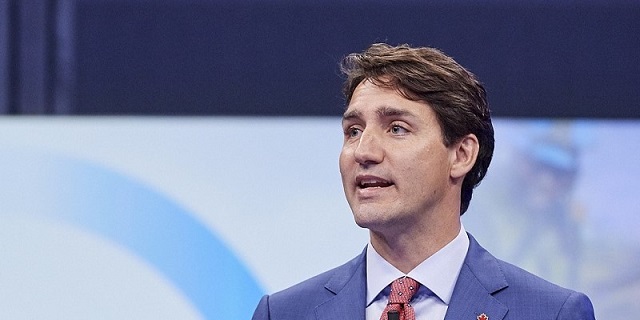Community
Pasula to Ensure Children Enjoy Access to All the Best Catholic Schools Have to Offer

About Kim
I was born and raised in rural Alberta. After graduating from a small school in a class of 19 students, I went on to earn three university degrees and have made a living working in business and education, running my own small businesses and teaching as a college instructor. After Patricia and I were married at St. Joseph’s Basilica in Edmonton, I launched the Entrepreneurial Centre in Lethbridge, before returning to establish our home here in Red Deer. Our children Brett and Kate, graduates of our Catholic schools and members of Sacred Heart Parish, are attending university at UBC.
Over the last 15 years, I have focused my work as a social justice advocate with charities and community organizations that are important to me. I have chaired and served on the boards of: our Catholic Education Foundation; Hospice; Community Legal Clinic; Community Foundation; School Council; Community Capital; RD Boxing Club; CAPRA-Poverty Reduction Alliance; Habitat for Humanity; Lifelong Learning Council; RDC Management Advisory Council; Public Legal Education Association of Canada; Canadian Centre for Court Technology, Alberta Community Economic Development Network; and, the Food for Friends Society. Currently, I am working on a major project involving Safe Harbour and Central Alberta Women’s Emergency Shelter.
Preserving and Strengthening Catholic Schools
Catholic education is critically important to our children and our community. Always has been, always will be. Children have a right to a fully, publicly funded, Catholic education.
Families and young people are choosing our Catholic schools. Our student roster has grown to 10,000 children and young people. Our division funding has grown to $100 million dollars.
There is some rhetoric from a few however, that would like to see our Catholic school division eliminated. My commitment to the families and all in our community: I will preserve and strengthen Catholic education, built upon the pillars of home, parish and school, so that their children, our young people, can thrive in safe and caring and faith-filled schools of their choice.
Catholic Education is Important to Our Children and Our Community
Catholic education: changes lives, builds community. God created us with two hands: one to help ourselves, the other to help others. My commitment to our community: I will ensure that our schools prepare children for the workforce of tomorrow; develop informed citizens that can think for themselves and participate in civic affairs; and, give our children reason for optimism, for hope. I will ensure that our schools prepare children to live fully, so that they can contribute to society, provide for their families, and serve others in need in our community.
My Commitment to You
As your trustee I will: preserve and strengthen Catholic education; ensure that teachers and schools are properly resourced to deliver the highest standard of education; ensure that all budget decisions are made in the best interests of your children. I have long advocated for the elimination of school fees. As your trustee, under your guidance, I will work to create a system where all the best our schools have to offer are accessible to all, at no cost to children and their families.
I see my role, as a trustee, to be your representative. I commit to reaching out to you, being open and accessible, and a good listener. My goal is to ensure that you and all in our community help inform decisions and policy regarding the Catholic education of children and young people in our community.
Community
SPARC Red Deer – Caring Adult Nominations open now!

Red Deer community let’s give a round of applause to the incredible adults shaping the future of our kids. Whether they’re a coach, neighbour, teacher, mentor, instructor, or someone special, we want to know about them!
Tell us the inspiring story of how your nominee is helping kids grow up great. We will honour the first 100 local nominees for their outstanding contributions to youth development. It’s time to highlight those who consistently go above and beyond!
To nominate, visit Events (sparcreddeer.ca)

Addictions
‘Harm Reduction’ is killing B.C.’s addicts. There’s got to be a better way

From the Frontier Centre for Public Policy
B.C. recently decriminalized the possession of small amounts of illicit drugs. The resulting explosion of addicts using drugs in public spaces, including parks and playgrounds, recently led the province’s NDP government to attempt to backtrack on this policy
Fuelled by the deadly manufactured opioid fentanyl, Canada’s national drug overdose rate stood at 19.3 people per 100,000 in 2022, a shockingly high number when compared to the European Union’s rate of just 1.8. But national statistics hide considerable geographic variation. British Columbia and Alberta together account for only a quarter of Canada’s population yet nearly half of all opioid deaths. B.C.’s 2022 death rate of 45.2/100,000 is more than double the national average, with Alberta close behind at 33.3/100,00.
In response to the drug crisis, Canada’s two western-most provinces have taken markedly divergent approaches, and in doing so have created a natural experiment with national implications.
B.C. has emphasized harm reduction, which seeks to eliminate the damaging effects of illicit drugs without actually removing them from the equation. The strategy focuses on creating access to clean drugs and includes such measures as “safe” injection sites, needle exchange programs, crack-pipe giveaways and even drug-dispensing vending machines. The approach goes so far as to distribute drugs like heroin and cocaine free of charge in the hope addicts will no longer be tempted by potentially tainted street drugs and may eventually seek help.
But safe-supply policies create many unexpected consequences. A National Post investigation found, for example, that government-supplied hydromorphone pills handed out to addicts in Vancouver are often re-sold on the street to other addicts. The sellers then use the money to purchase a street drug that provides a better high — namely, fentanyl.
Doubling down on safe supply, B.C. recently decriminalized the possession of small amounts of illicit drugs. The resulting explosion of addicts using drugs in public spaces, including parks and playgrounds, recently led the province’s NDP government to attempt to backtrack on this policy — though for now that effort has been stymied by the courts.
According to Vancouver city councillor Brian Montague, “The stats tell us that harm reduction isn’t working.” In an interview, he calls decriminalization “a disaster” and proposes a policy shift that recognizes the connection between mental illness and addiction. The province, he says, needs “massive numbers of beds in treatment facilities that deal with both addictions and long-term mental health problems (plus) access to free counselling and housing.”
In fact, Montague’s wish is coming true — one province east, in Alberta. Since the United Conservative Party was elected in 2019, Alberta has been transforming its drug addiction policy away from harm reduction and towards publicly-funded treatment and recovery efforts.
Instead of offering safe-injection sites and free drugs, Alberta is building a network of 10 therapeutic communities across the province where patients can stay for up to a year, receiving therapy and medical treatment and developing skills that will enable them to build a life outside the drug culture. All for free. The province’s first two new recovery centres opened last year in Lethbridge and Red Deer. There are currently over 29,000 addiction treatment spaces in the province.
This treatment-based strategy is in large part the work of Marshall Smith, current chief of staff to Alberta’s premier and a former addict himself, whose life story is a testament to the importance of treatment and recovery.
The sharply contrasting policies of B.C. and Alberta allow a comparison of what works and what doesn’t. A first, tentative report card on this natural experiment was produced last year in a study from Stanford University’s network on addiction policy (SNAP). Noting “a lack of policy innovation in B.C.,” where harm reduction has become the dominant policy approach, the report argues that in fact “Alberta is currently experiencing a reduction in key addiction-related harms.” But it concludes that “Canada overall, and B.C. in particular, is not yet showing the progress that the public and those impacted by drug addiction deserve.”
The report is admittedly an early analysis of these two contrasting approaches. Most of Alberta’s recovery homes are still under construction, and B.C.’s decriminalization policy is only a year old. And since the report was published, opioid death rates have inched higher in both provinces.
Still, the early returns do seem to favour Alberta’s approach. That should be regarded as good news. Society certainly has an obligation to try to help drug users. But that duty must involve more than offering addicts free drugs. Addicted people need treatment so they can kick their potentially deadly habit and go on to live healthy, meaningful lives. Dignity comes from a life of purpose and self-control, not a government-funded fix.
Susan Martinuk is a senior fellow at the Frontier Centre for Public Policy and author of the 2021 book Patients at Risk: Exposing Canada’s Health Care Crisis. A longer version of this article recently appeared at C2CJournal.ca.
-

 Business2 days ago
Business2 days agoBusiness investment key to addressing Canada’s productivity crisis
-

 Jordan Peterson1 day ago
Jordan Peterson1 day agoJordan Peterson slams CBC for only interviewing pro-LGBT doctors about UK report on child ‘sex changes’
-

 International2 days ago
International2 days agoBrussels NatCon conference will continue freely after court overturns police barricade
-

 Business2 days ago
Business2 days agoFederal budget fails to ‘break the glass’ on Canada’s economic growth crisis
-

 Frontier Centre for Public Policy1 day ago
Frontier Centre for Public Policy1 day agoThe Smallwood solution
-

 Alberta1 day ago
Alberta1 day agoDanielle Smith warns arsonists who start wildfires in Alberta that they will be held accountable
-

 Economy2 days ago
Economy2 days agoFederal government remains intransigent on emissions cap despite dire warnings of harm
-

 Economy2 days ago
Economy2 days agoFederal budget’s scale of spending and debt reveal a government lacking self-control









